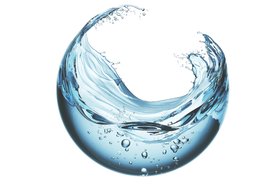Google plans to replenish on average 120 percent of the water it consumes at its data centers and offices by 2030.
The company's data centers have been focal points for local consternation over water use, amid growing droughts across the US.
Google said that it already uses reclaimed wastewater to cool its data center in Douglas County, Georgia, and now plans to use seawater or reclaimed wastewater where possible in other data centers.
In Dublin, Ireland, it's installing rainwater harvesting systems to reduce stormwater flows to improve water quality in the River Liffey and the Dublin Bay. In Los Angeles, Google is investing in efforts to remove water-thirsty invasive species to help the nearby ecosystem in the San Gabriel mountains.
The company is also working with community groups, including a Colorado River Indian Tribes project to reduce the amount of water that is withdrawn from Lake Mead reservoir on the Colorado River in Nevada and Arizona.
Some of these projects technically do not replenish lost water - instead, they minimize water loss elsewhere.
Google data centers consume enormous quantities of water. Its Arizona campus will use one million gallons a day to start, and could increase that to four million as the site builds out. The state is suffering from a devastating drought, with Arizona's Department of Water Resources warning that water use "is over-allocated and the groundwater is overcommitted."
The cloud giant also spent years fighting local conservation groups over plans to take 1.5 million gallons of water per day from the Charleston, South Carolina aquifer. Google would have become the third-largest aquifer user in the three counties around Charleston, South Carolina, before it was forced to find another supplier.
"We’re focusing on three areas: enhancing our stewardship of water resources across Google office campuses and data centers, replenishing our water use and improving watershed health and ecosystems in water-stressed communities; sharing technology and tools that help everyone predict, prevent and recover from water stress," Google's chief sustainability officer Kate Brandt said.
Microsoft has also promised to replenish more water than it uses by 2030, and Facebook said it would be water positive by that date.




